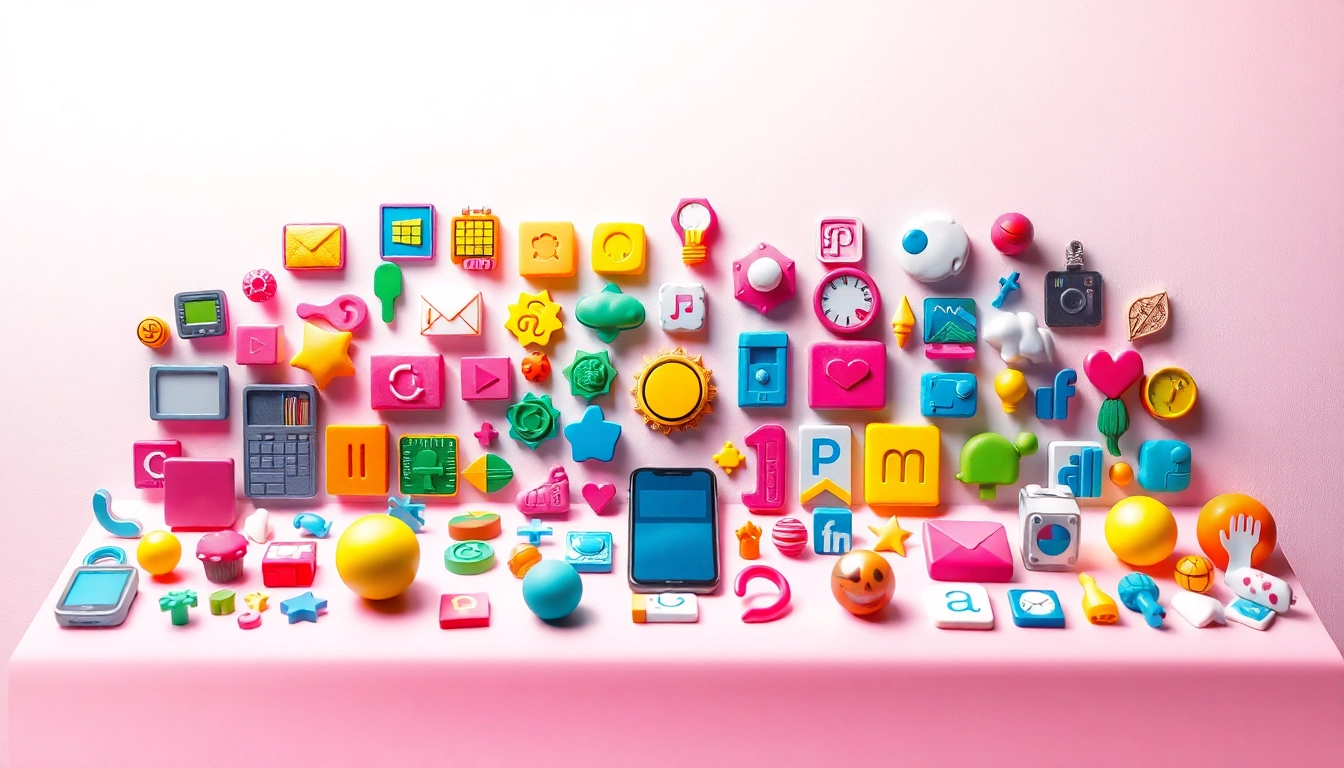Understanding Icons: What They Are and Their Importance
Definition of Icons
Icons are symbolic representations designed to convey meaning through visual imagery rather than through text. They serve as a universal language, transcending linguistic barriers to facilitate understanding and navigation, especially in digital environments. Icons can be seen everywhere – from mobile applications to websites, and they ubiquitously enhance the user experience by making interfaces more intuitive.
The Evolution of Icons in Digital Media
Icons have come a long way since their inception in the early graphical user interfaces of the 1980s. Originally simplistic and rudimentary, today’s icons boast intricate designs and complex functionalities. The transition from monochromatic symbols to vibrant, animated, and interactive icons illustrates how technology and design trends have shaped user expectations. The rise of mobile computing further accelerated this evolution, necessitating smaller, yet more impactful icons that can be easily identified on smaller screens.
Why Icons Matter in Visual Communication
In an era where users are bombarded with information, icons play a crucial role in visual communication. They act as shortcuts to understanding, enabling users to grasp concepts quickly. By incorporating icons into designs, brands can effectively convey messages, emotions, and actions with minimal clutter, thereby enhancing clarity and fostering engagement.
Types of Icons: Exploring the Varieties
Static vs. Animated Icons
Icons can either be static or animated, each serving distinct purposes. Static icons are simple images representing objects or actions, while animated icons add an extra layer of interactivity and engagement. For instance, a static download icon might simply signify the action of downloading, whereas an animated version could provide visual feedback by illustrating the download’s progress, thus enhancing user experience.
Functional Icons in User Interfaces
Functional icons, often found in user interfaces (UIs), are designed to facilitate specific actions, such as sharing, saving, or printing. These icons must be immediately recognizable and intuitive to ensure seamless interactions. A well-designed functional icon will guide the user efficiently, reducing cognitive load and time spent on navigation.
Decorative Icons for Branding and Design
While functional icons serve a practical purpose, decorative icons contribute to a brand’s visual identity. They add aesthetic appeal and help convey the brand’s personality. For example, a travel company may use whimsical icons representing mountains or airplanes to evoke feelings of adventure, thereby enhancing the overall brand experience and emotional connection with the audience.
Creating Icons: Design Best Practices
Choosing the Right Style for Your Icons
When creating icons, it’s essential to choose a style that aligns with the rest of the design. Flat icons, minimalistic designs, and more illustrative styles each convey different feelings and messages. Consistency in style helps in creating a cohesive design language that resonates with users and reinforces brand identity.
Utilizing Color Theory in Icons
Color plays a vital role in icon design, as it can evoke emotions and influence perceptions. Understanding color theory can help designers choose appropriate color palettes that not only enhance visibility but also convey the desired message. For instance, warmer colors like red and orange can stimulate excitement, while cooler colors can induce calmness and trust.
Leveraging Typography in Icon Design
Typography can also be integrated into icon design to enhance communication. Combining icons with text labels can clarify their meaning, particularly in cases where the icon may be ambiguous. This approach needs careful consideration of font choices to ensure legibility and harmony in the overall design.
Using Icons Effectively: Tips for Implementation
Placement and Scale of Icons in Design
The placement and scale of icons are critical in guiding user behavior. Icons should be positioned where users naturally look first, typically in navigation bars or near call-to-action buttons. Additionally, ensuring that icons are appropriately scaled enhances their functionality without overwhelming the user interface.
Integrating Icons into Websites and Apps
Integrating icons seamlessly into websites and applications requires attention to context and usability. Icons should align with the purpose of the surrounding content, ensuring they enhance rather than distract from the user experience. Techniques like hover effects or tooltips can provide additional information without cluttering the interface.
Using Icons to Enhance User Experience
To optimize user experience, icons should be intuitive and serve a clear purpose. The use of universally recognized symbols helps in communicating actions quickly, reducing frustration, and improving overall user satisfaction. Regular user testing can identify which icons resonate best with your audience and refine their design accordingly.
Resources for Icons: Where to Find Quality Designs
Top Websites for Free and Paid Icons
There is no shortage of resources available for finding high-quality icons, be it free or paid. Sites like Flaticon, Icons8, and The Noun Project offer vast libraries catering to different design needs. These resources present an excellent opportunity for designers to source both standard icons and unique sets tailored to particular themes.
Choosing Between Custom and Pre-Made Icons
When deciding between custom and pre-made icons, consider the project’s scope, budget, and time constraints. Pre-made icons can be economical and sufficient for many projects, while custom designs allow for greater alignment with brand identity and unique user needs. A thoughtful approach to this decision can significantly impact the effectiveness of your visual communication.
Contributing to Icon Libraries and Communities
Designers can also consider contributing to icon libraries and communities. Sharing original icons or collaborating on open-source icon projects not only enhances visibility but also builds connections within the design community. Engaging with other designers through feedback and collaboration cultivates a rich ecosystem of creativity and support in the icon design field.
